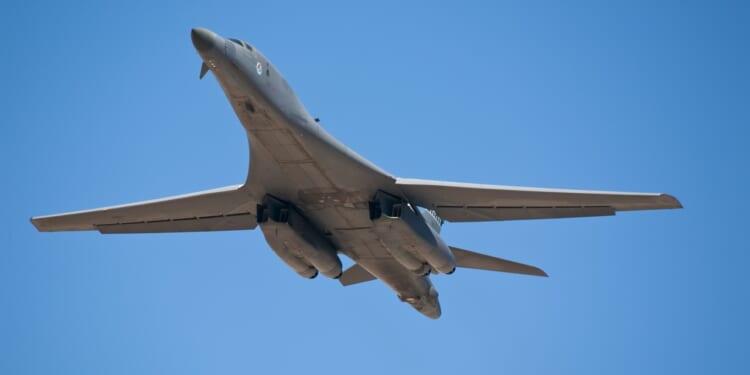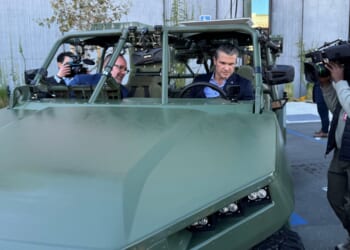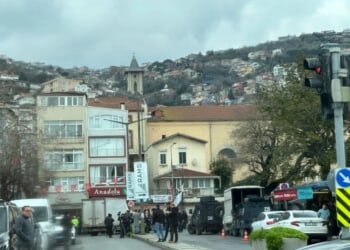The Air Force’s recent B-1B flights are a visible cue that the United States still considers the Caribbean to be within its sphere of influence.
Two US Air Force B-1B Lancer bombers conducted a training mission over the Caribbean Sea on Thursday, October 23—the second such flight in a week, and the latest in a series of high-profile bomber patrols signaling a renewed US attention to the Western Hemisphere. The aircraft departed from Dyess Air Force Base, Texas, and executed extensive operations in international airspace before returning home. Civilian flight trackers observed the B-1B’s movements in real time.
The B-1B flight comes on the heels of a similar flight, conducted last week with three B-52H Stratofortresses, from Barksdale Air Force Base, Louisiana. The B-52Hs performed a similar mission, flying roughly ninety miles north of Venezuela.
The Trump Administration’s Show of Force in the Caribbean
Both the B-52H and the B-1B flights were categorized as “training” missions. But obviously both operations were unmistakably a show of force, coinciding with a surge in US military activity throughout the Caribbean as part of the Trump administration’s efforts against drug cartels in the region. As part of the efforts, US forces have executed at least nine airstrikes on alleged maritime narcotics traffickers, killing dozens of suspected smugglers.
The B-1B mission fits broadly within that broader demonstration of force. Publicly, the flight signals US reach, readiness, and deterrence—capabilities the US has rarely demonstrated so overtly in its own hemisphere. The Caribbean Sea has long been regarded as America’s “back yard”; it lacks a great power competitor, or even a viable competitor, aside from minor irritants like Cuba and Venezuela.
Despite US primacy in the Caribbean, the region is contested, with increased attention from non-regional powers, as well as transnational crime and periodic humanitarian crises. The B-1B flights are a visible cue that the US still considers the Caribbean within its sphere of US influence—and in particular a warning to nations like Russia and Iran, which have recently been coordinating more closely with Venezuela.
The B-1B Lancer’s Specifications
- Year Introduced: 1985
- Number Built: 104 (45 in active service)
- Length: 146 ft (44.5 m)
- Wingspan: 79 ft (24.1 m)
- Weight:
- 190,000 lb (86,183 kg) empty
- 477,000 lb (216,364 kg) MTOW
- Engines: 4 x General Electric F101-GE-102 afterburning turbofan engines
- Top Speed: ~925 mph (~1,500 km/h, Mach 1.25) at altitude
- Range: 6,500 nmi (~7,500 mi, 12,000 km)
- Service Ceiling: 60,000 ft (18,000 m)
- Payload:
- Internal: 75,000 lb (34,019 kg)
- External: 50,000 lb (22,679 kg)
- Aircrew: 4 (aircraft commander, copilot, two weapon systems officers)
The B-1B Lancer Is Ideal for Trump’s Mission Set
The B-1B—America’s only supersonic bomber aircraft, capable of reaching speeds of roughly Mach 1.2—is well-suited to a show of force against Caracas. The aircraft can depart from US soil, loiter, strike, and return to US soil. Flying it near Venezuelan airspace is a relatively simple operation, well within the capabilities of the platform, showing regional parties that they are within range of US heavy bombers. In a wider context, the flights show both regional regimes and external powers that the US retains unchallenged air supremacy within the hemisphere.
Oddly enough, despite the contemporary relevance of the platform, the B-1B is slated for retirement. Originally designed to penetrate Soviet air space and perform deep strike missions, the non-stealth B-1B is being phased out—along with the Northrop B-2 Spirit—in favor of the forthcoming B-21 Raider, which uses stealth rather than speed to penetrate enemy air defenses.
Yet ironically, the B-21 Raider would be far less useful for the B-1B’s present mission in the Caribbean. After all, what is the point of a show of force if your adversary cannot see it?
About the Author: Harrison Kass
Harrison Kass is a senior defense and national security writer at The National Interest. Kass is an attorney and former political candidate who joined the US Air Force as a pilot trainee before being medically discharged. He focuses on military strategy, aerospace, and global security affairs. He holds a JD from the University of Oregon and a master’s in Global Journalism and International Relations from NYU.
Image: Shutterstock.

















